

RETURNS MANAGEMENT 101

Returns Management is a vital part of the reverse logistics supply chain. As shoppers purchase more online, ecommerce return rates and the challenges associated with returns continue to rise.
According to the National Retail Federation., consumers returned over $816 billion worth of retail merchandise purchased in 2022. How merchants choose to manage customer returns is now imperative to their success and profitability. A successful returns management strategy ensures efficient store operations and improves customer satisfaction.
Understanding how returns management works can help ecommerce merchants remain profitable. Effective returns management can streamline business operations, reduce return costs and improve customer lifetime value. Additionally, it can maximize the value of returned products to your store and improve your bottom line.
This guide was created to help educate merchants about Returns Management arming them with the information they need to help make informed decisions about managing returns. Dive in as we explore what is returns management, its benefits, challenges, and best practices for managing returns in ecommerce.


Returns management is the systematic approach for dealing with customer returns. It ensures efficiency, customer satisfaction, and cost-effectiveness.
Returns Management focuses on the efficient handling and processing of customer returns. It is essential for merchants as it directly impacts customer experience, operations efficiency, and business profitability.
Managing a return across the full life cycle includes RMA authorization and validation. The final return resolution can be a refund, exchange, store credit, or even a warranty return.
Efficient returns management is crucial for maintaining positive customer relationships and loyalty. By providing a seamless and hassle-free returns process, merchants can enhance customer satisfaction and trust.
Returns management helps brands understand why products are returned. This can lead to product improvements, better quality control, and improved customer service.
The returns management process typically includes the following steps or components:
Returns authorization involves the establishment of a clear and streamlined process for customers to request returns. It includes defining return policies, setting time limits for returns, and providing guidelines for packaging and documentation.
Return validation requires verifying the returned item’s eligibility. This includes checking the return condition, original purchase details, and warranty coverage.
Return transportation involves the logistics of physically transporting returned items from the customer back to the business. Merchants can utilize returns software that deploys specific return shipping rules based on return type and shipping policies.
Return transportation can also involve the coordination of shipping labels, and arranging pickup or drop-off locations at local carriers or in-store return bar locations. Tracking return shipments to guarantee timely arrival is an important part of this process.
Once a return is received, a operations and warehouse team will inspect and evaluate the returned item. This is done to evaluate an item’s condition while the information gathered is used to decide what to do next.
This step involves checking for any damage, defects, or discrepancies between the returned item and its original state. The item’s return disposition is assigned by the operations and warehouse team. Inspection and evaluation help categorize returns for repair, refurbishment, resale, or disposal.
Refund and reimbursement processes involve issuing appropriate compensation to customers for returned items. This may include refunding the purchase price, providing store credit, or processing exchanges or replacements.
Refund policies outline the rules and guidelines on what to expect. Timely and accurate refunds are crucial for maintaining customer satisfaction and trust.
Returns management includes replenishing inventory to account for returned items that can be resold. Accurate tracking of returned products allows warehouse teams to update stock levels, adjust procurement plans, and minimize stockouts or overstocking situations.

Returns management software is a specialized tool or system that helps merchants and businesses handle the process of product returns efficiently and effectively. It is designed to streamline and automate various aspects of the returns process, from the initial return request to the final resolution. Ecommerce returns management software typically includes features such as return authorization, tracking, inventory management, communication with customers, and reporting.
The software enables merchants to centralize and manage their returns in a systematic manner. It allows them to track and document returned items, assess their condition, determine the appropriate action to take (such as refund, exchange, or warranty repair), and manage the logistics of the return process.
Returns management software also helps merchants analyze return data and gain insights into patterns, trends, and reasons for returns, which can be useful in making improvements to products, customer service, and overall business operations.
By utilizing returns management software, merchants can enhance customer satisfaction by providing a smooth and efficient returns experience. The software helps reduce manual errors, speeds up processing times, and improves communication with customers throughout the returns journey. It also provides merchants with valuable data and analytics that can inform decision-making and optimize the returns process to minimize costs and maximize operational efficiency.
Knowing the difference between returns management and reverse logistics is important as they mean two different things. While both terms are often used mutually, they represent distinct concepts and practices.
Returns management primarily focuses on handling customer returns efficiently and ensuring customer satisfaction. It deals with processes like returns authorization, transportation, inspection, and refunds.
Reverse logistics covers more than just customer returns. It also includes repair, refurbishment, remarketing, and disposal throughout the product’s lifecycle.
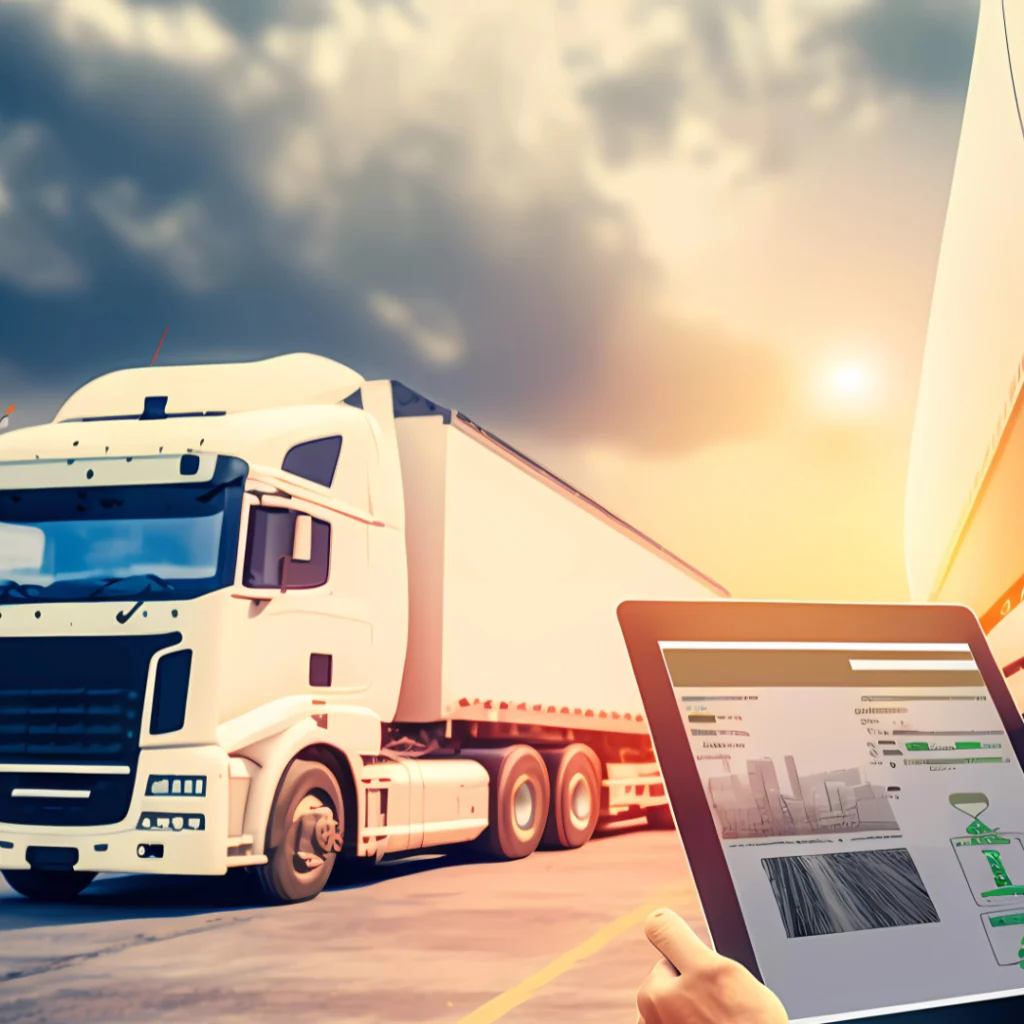
As mentioned above reverse logistics is different that returns management. Reverse logistics encompasses the entire process of handling returned products beyond just the customer return. It involves the collection, transportation, disposition, and final destination of returned items. Reverse logistics is broader in scope than returns management as it includes activities such as repair, refurbishment, remarketing, and disposal.
Reverse logistics covers more than customer returns. It encompasses returns from retailers, distributors, and warranty claims. It aims to optimize the value recovery from returned items while minimizing waste and environmental impact.
Just like returns management, there are key processes associated with reverse logistics. Understanding these processes will help define how reverse logistics is different than returns management.
Reverse logistics begins with receiving and sorting a merchant’s returned items. Returned items that are not suitable for restocking are often sent in bulk to a warehouse 3PL for sorting.
The 3PL team verifies returned products against documentation. They check for damages or missing components and sort products according to disposition categories (e.g., repair, refurbish, or liquidate).
After the 3PL warehouse sorting, the next step in reverse logistics is making decisions regarding the disposition of returned items. This involves evaluating factors such as the cost of repair, market demand, product value, and available resources. Disposition decisions determine whether a returned item should be repaired, refurbished, resold at a discount, recycled, or disposed of.
Reverse logistics often involves repair and refurbishment processes for items that can be restored to a sellable or usable condition. Skilled technicians may perform repairs, replace faulty components, or enhance the product’s aesthetic appeal. Repackaging is also carried out to present refurbished items in a manner that aligns with market standards and customer expectations.
Once repaired or refurbished, returned items can be reintroduced to the market for resale. This may involve establishing channels for remarketing, such as discount online marketplaces, outlet stores, or wholesale partnerships. Effective remarketing strategies help maximize the value recovery from returned products.
For items that cannot be repaired, refurbished, or resold, reverse logistics includes environmentally responsible recycling or disposal. For proper disposal and to minimize environmental impact, merchants should:
The difference between returns management and reverse logistics can be broken down into a few different areas:
Returns management tends to operate on a shorter timeframe, as it aims to process customer returns promptly. It involves handling returns in a timely manner to provide quick resolutions to customers.
In contrast, reverse logistics processes can be more complex and time-consuming, particularly when repair, refurbishment, or remarketing is involved. These activities require additional time and resources to restore products to a sellable state.
Returns management primarily focuses on customer satisfaction and maintaining positive relationships. It aims to process returns efficiently while minimizing financial losses from returns. Reducing returns frees up more working capital for merchants.
In contrast, reverse logistics places a greater emphasis on value recovery. It seeks to optimize the value of returned products by repairing, refurbishing, and reselling them. Reverse logistics also addresses sustainability concerns by including recycling and proper disposal practices.
Returns management plays a crucial role in maintaining positive customer relationships and ensuring a better returns experience. It involves clear communication, prompt refunds, and hassle-free processes. A positive returns experience improves customer lifetime value (CLV).
Reverse logistics affects customer satisfaction, but its main purpose is to maximize value recovery and working efficiency. This is done by improving product availability and quality.

Both returns management and reverse logistics heavily rely on data and analytics. Ecommerce merchants can gain valuable insights by integrating data from various sources, such as returns data.
These insights can include return patterns, reasons for returns, product quality issues, and customer preferences. This data can inform decision-making, improve operations efficiency, and drive process improvements across both returns management and reverse logistics functions.
Advancements in technology and automation present opportunities for integration and optimization in both returns management and reverse logistics.
Merchants can use automation tools, such as RMA authorization, barcode scanning, data capture, and real-time tracking systems. This will help to streamline processes, improve accuracy, and increase visibility.
Integrated technology solutions can enable seamless information exchange between the two functions, helping with efficient returns handling and value recovery.
Effective collaboration and communication between returns management and reverse logistics teams are crucial for seamless operations and process integration. Both functions need to work together to share information, exchange insights, and coordinate activities.
Businesses can foster collaboration to identify areas of improvement. This can help streamline processes and enhance efficiency in handling returns and managing the reverse logistics process.
These teams can work together to set shared goals and objectives. This will bring returns management and reverse logistics into alignment. This way, we can take a unified approach to handling returned products.
Regular meetings and feedback sessions can encourage open communication. This enables teams to recognize and tackle any challenges they may face. They can also share the best practices and look for opportunities to optimize.
Cross-functional collaboration can also extend beyond internal teams to include external stakeholders such as suppliers, logistics providers, and recycling partners. Establishing strong partnerships and effective communication channels with these stakeholders can enhance the overall returns management and reverse logistics processes.

Efficient returns management solutions can help reduce costs. Reverse logistics processes can also lead to savings by reducing the impact of returns on overall operations. By streamlining processes such as returns authorization, transportation, and evaluation, businesses can reduce handling and processing costs associated with returned products.
A seamless returns experience can significantly impact customer satisfaction and loyalty. Brands can build trust with customers by providing hassle-free returns processes, timely refunds, and efficient exchanges or replacements. This will improve the customers’ overall experience and foster brand loyalty.
Returns management and reverse logistics present opportunities for merchants to demonstrate their commitment to sustainability. Companies can reduce waste and lessen their ecological footprint by using environmentally friendly practices. These include product refurbishment, recycling, and proper disposal.
Effective reverse logistics processes allow businesses to recover value from returned products that can still be resold or refurbished. Companies can reduce costs related to returns by using strategies for remarketing and resale. This can even create new revenue sources and improve your bottom line.

Returns management and reverse logistics can be operationally complex, requiring dedicated resources, facilities, and skilled personnel. Merchants must carefully allocate resources and establish efficient processes to manage the complexities of handling returned products.
Integrating returns management and reverse logistics with existing systems, such as inventory management and order fulfillment, can be challenging. It requires seamless data exchange and coordination among different departments and systems within the organization.
Merchants should review providers with platform openness. Open APIs make these integrations more seamless and can be customized to fit any tool or platform.
Determining the appropriate disposition strategy for each returned product can be challenging. Merchants must evaluate the condition, value, and best course of action for a product. Possible courses of action include repair, refurbishment, resale, recycling, or disposal.
Returns automation can resolve manual returns review and disposition tracking. Automation can be set based on return rules, return policies, or shipping status. Effective decision-making models and clear guidelines can help streamline this process.
Efficient returns management and reverse logistics heavily rely on accurate and real-time data. Businesses face challenges in gathering and analyzing data related to returns, including reasons for returns, product conditions, and customer feedback.
Establishing robust data management systems and fostering information sharing among relevant stakeholders is crucial for effective decision-making and process improvement.

Here are some standard best practices merchants use when implementing new returns management processes:
Implement a transparent and efficient returns authorization process that provides customers with easy-to-understand guidelines for returning products. Merchants should utilize automated returns management systems to validate returns and ensure that only eligible returns are accepted.
Optimize the transportation and logistics processes for returns to minimize costs and maximize speed. Utilize partnerships with logistics providers and implement tracking systems to enable visibility and tracking throughout the return journey.
Implement automated inspection and evaluation systems to expedite the assessment of returned products. This reduces human error and speeds up the decision-making process regarding the disposition of the returned items.
Establish clear and efficient refund policies and reimbursement processes to ensure timely and accurate payments to customers. Automation can help streamline these processes, reducing errors and delays.
Utilize returns data to improve inventory management and replenishment strategies. Analyze return patterns and adjust stock levels accordingly to avoid overstocking or understocking.
Use returns analytics and reporting tools to identify trends. Analyze return reasons to make informed decisions. These decisions can help to improve product quality and shopper experiences.


Identifying Root Causes and Implementing Preventive Measures:
Analyze the root causes of returns. Take proactive steps to prevent future returns. These steps may include improving product descriptions, enhancing packaging, or providing better sizing guides.
Leverage your returns management software for a personalized returns experience for your customers. This includes self-service return initiation and real-time return tracking.
Encourage customer loyalty and repeat purchases. Implement return loyalty programs. Offer incentives or exclusive benefits to customers who frequently engage with the returns process.
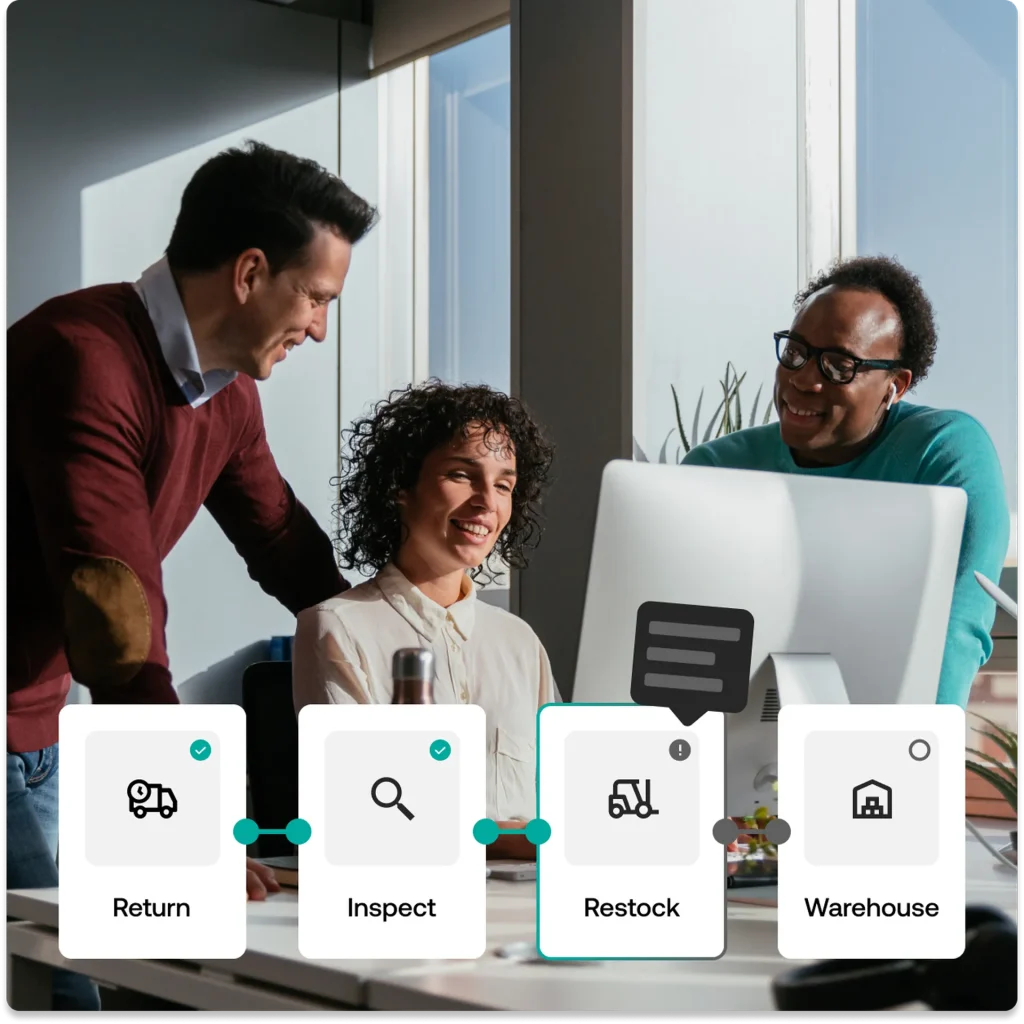
Implement efficient receiving and sorting processes to categorize returned products based on their condition, disposition options, and potential value recovery. This ensures accurate inventory tracking and facilitates subsequent processing steps.
Develop well-defined disposition strategies based on factors such as product condition, value, and market demand. Merchants should establish decision-making models that guide the selection of the most appropriate course of action for each returned item.
Utilize skilled technicians and established repair processes to efficiently address product issues and refurbish items that can be resold. Implement standardized repackaging procedures to ensure products are presented in a like-new condition.
Implement effective remarketing and resale strategies to maximize the value recovery of returned products. This can include establishing dedicated channels for refurbished products, partnering with secondary market platforms, or implementing direct-to-consumer resale initiatives.
Adopt environmentally responsible practices for recycling and disposing of products that cannot be resold or refurbished. Comply with relevant regulations and collaborate with certified recycling partners to minimize environmental impact.
Today’s ecommerce environment is fast-paced and competitive. Efficiently managing reverse logistics and implementing these best practices is essential for organizations aiming to provide exceptional customer experiences.
When it comes to managing returns there are thousands of options out there. The solution you choose really depends on your returns volume, ecommerce platform, geography, and the problem you’re trying to solve.
Returns solutions range from simple Shopify returns apps, to returns management platforms, to enterprise-focused reverse logistics companies. The list below contains a breakdown of some best-in-class returns providers and options available to merchants today.

Returnly is a Shopify returns app that focuses on improving the customer experience during the returns process. They offer a returns portal that is easy to use. Returns earn customers instant store credit. The integration of returns with ecommerce platforms makes it simple for customers and merchants.
While Returnly is a great option for small merchants starting out, there are some drawbacks. Returnly changes merchants ‘Returnly Tax’ for their exchange transactions. Their Instant Exchanges feature also enables a risk of returns fraud and accounting reconciliation issues. Merchants should also consider the lack of support for warranty returns, bundled returns and return disposition management when evaluating this Shopify app as an option.
Another popular Shopify returns app is Loop Returns. They have leaned heavily into promoting exchanges over refunds. Loop has a ton of useful features for Shopify merchants and helps merchants upsell.
With two base plans and four add-ons, a merchant’s annual contracts can get expensive fast. Once a contract is signed, it can be a challenge for merchants to get the continued support they need.
However, their strength lies in their partnerships. Shopify store merchants can use Loop to improve the shopping experience for customers. They have partnered with Happy Returns, Veho, Arrive, and agencies to unlock new features.
ReturnGo is a new Shopify returns app. As mentioned with the previous Shopify return apps, ReturnGo is a great tool for small merchants. With their smaller plans and cheaper pricing, ReturnGo gives the basic functionality Shopify merchants need to get a grasp on returns. With a lower price point and fewer bells + whistles, ReturnGo can help merchants achieve baseline returns automation.
Shopify returns apps are a good option for small merchants just starting out. But merchants should be aware of some common issues that should be considered before signing a contract with these providers:

ReturnLogic is a leading returns management software that simplifies and streamlines the entire returns management process for merchants. ReturnLogic has an intuitive interface and powerful features.
They help growing brands optimize their returns management, enhance inventory control, and gain insights through analytics and reporting. ReturnLogic caters to a wide range of industries and has been proven to drive business efficiency and customer satisfaction.
ReturnLogic is great for merchants who are data and operations-focused. Their software enables merchants to solve ‘why’ returns are happening.
By working with merchants to build continuous improvement strategies with returns data, merchants improve the shoppers’ experience, improve operational efficiency, and ultimately grow profits.
Happy Returns is a returns management company that excels at in-store returns. They operate a network of return drop-off locations known as Happy Returns Return Bar or Happy Returns locations. Customers can use these locations to easily return their online purchases. They provide in-person returns assistance, packaging, and automated refund processing to streamline the returns experience.
While the Happy Returns in-store returns method is beneficial, it can be challenging for merchants to liquidate or resell when items are sent back in bulk. The faster items get back to the warehouse, the better. However, these shortcomings can be made up through partnerships, like with Loop Returns.
Narvar is a comprehensive tracking solution that also manages returns. Narvar started off as a shipment tracking and post-purchase experience company for enterprise brands but has recently introduced a returns solution for Shopify merchants. Retailers find value in having one platform for both tracking and returns.
Narvar is great for enterprise retailers focused on tracking retailer shipments. With their recent move to enter the Shopify market for returns, they’ve created a more complete product offering, but still have some kinks to iron out.
AfterShip is like a combination of Narvar and ReturnGo. Like Narvar, AfterShip has its origin in shipment tracking. However, with their added returns management offering, AfterShip has the same basic functionality as ReturnGo. For those who want shipment tracking and returns management in one platform, who are price conscious, or who operate internationally, AfterShip is a solid tool.
AfterShip is a solid tool for SMB international merchants who want to consolidate shipment tracking and returns management into one platform. However, like Narvar, with so much focus on tracking, they can lose sight of how to effectively help merchants manage returns.
ReturnLogic offers a suite of features designed to streamline every aspect of the returns management process:
ReturnLogic simplifies the returns process for both shoppers and merchants. It makes it easy to initiate returns, generate return labels, and track the status of returns in real time.
The returns platform automates tasks like return authorization, inspection, and refund processing. This reduces manual effort and ensures consistency and accuracy.


ReturnLogic offers powerful inventory management. It allows merchants to track returned products, manage stock levels, and integrate with their existing inventory systems. This ensures a smooth experience.
ReturnLogic provides returns management services for advanced analytics and reporting tools. This enables merchants to gain insight into return trends. Additionally, they can identify the root cause of returns, and use data-driven decisions to improve processes and customer experiences.

C.H. Robinson is a global logistics company. They offer reverse logistics services. This helps businesses manage the flow of products back through the supply chain efficiently.
They offer a range of services, such as product returns, repair, and refurbishment. Additionally, they provide asset recovery. They also provide comprehensive logistics solutions, such as transportation and warehousing.
GENCO, a FedEx company, specializes in reverse logistics and provides end-to-end solutions for managing returns and product lifecycle management. They provide services such as returns processing software, product refurbishment, liquidation, and recycling. This helps businesses gain value from returned products and improve their supply chain processes.
ReverseLogix is a dedicated reverse logistics company that focuses on helping businesses streamline and optimize their reverse logistics operations. Their platform is cloud-based. It offers returns management, repair and refurbishment, disposal, and reporting. This helps businesses increase efficiency, lower costs, and boost customer satisfaction.
Optoro is a reverse logistics company that specializes in helping enterprise retailers and brands efficiently manage and optimize their returns processes. They offer a comprehensive returns platform that includes features like returns tracking, inventory management, and analytics to provide valuable insights into return trends.
Pitney Bowes provides reverse logistics services as part of its broader range of solutions. The company recognizes the importance of efficiently managing the reverse flow of products and offers services to help enterprise retailers handle returns, repairs, and product lifecycle management. Pitney Bowes’ reverse logistics solutions encompass various aspects of the process, including returns management, product refurbishment and repair, and disposal or recycling.
Examples of returns management and reverse logistics companies demonstrate the diversity of their services and approaches. Each company has its own unique returns solutions to address the challenges of managing returned products.
Every store handles returns in its own way, and there isn’t a single platform that can meet all their needs. Different platforms have different specialties, like serving small or large stores, focusing on what happens after purchase or on the store’s operations. Merchants have lots of options to choose from based on what they want to achieve.
When evaluating returns management software, merchants need to think about a few things. Should they prioritize making the shopping experience better or making operations more efficient?
Is it easier to have shipping tracking and returns management in one place? Merchants should also ask the returns solution provider how they can help make the returns process easy and affordable while protecting the store’s profits. Ask for case studies and examples of merchants who have seen success with the use of their returns software services.
In the end, merchants should ask the returns management solution provider a simple question: How will they help the store make money and have a smooth returns process?
The provider should be a long-term partner invested in the merchant’s success. If they can’t answer how they’ll make you profitable, they might not be the best choice for your brand.
Once you’ve selected a provider, it’s time to think through the next steps. Traditionally a dedicated customer success manager will guide you through what to expect. To successfully implement returns management software, merchants expect to follow these essential steps:
Assess the current returns management processes, identify pain points, and define key objectives for implementing new software.
Create an account on the returns software provider’s account, configure your Shopify admin integration settings, and customize the platform to align with your business requirements.
Integrate your returns platform with other systems. Returns providers with native integrations and an Open-API make this step easier to connect to your existing tech stack. These include ecommerce platforms, help desks, inventory management software, and CRM systems. This integration will ensure data flows seamlessly.
Define return policies that are easy to understand. Create workflows for managing different types of returns. Customize your platform to match your business rules and processes and set up automation based on your store policies.
Provide comprehensive training and onboarding sessions to educate your customer service, operations, and warehouse teams on how to effectively use the new returns management software and maximize its potential. Review returns analytics dashboards with managers and executive teams so that the metrics you care about most are set as default upon login.
After training is complete, it’s time to launch your returns center. This can be customized to match your brand’s look and feel. Your dedicated Customer Success Manager will walk through what to expect on the day of launch while offering support every step of the way.
Your dedicated Customer Success Manager and support teams should meet with you at a minimum quarterly to review metrics and opportunities for returns optimization and improvement. Take advantage of these meetings to dive in deep with returns specialists to uncover insights that may have gone overlooked.

Your returns management software can integrate seamlessly with various third-party service providers across the return supply chain to enhance the efficiency of reverse logistics. This can be done through native integrations and an open API.
Here are some things to consider when thinking about what platforms you want to integrate with:
Integrate your preferred shipping and carrier services to streamline the returns shipping process, generate labels automatically, and track return shipments.
Collaborate with refurbishment and warranty repair services. Optimize the repair and refurbishment process. Extend the lifecycle of returned products. Maximize recovery value.

Establish partnerships with recycling and disposal centers to ensure responsible disposal of returned products and compliance with environmental regulations.
Seek guidance from return policy and compliance experts to ensure your return policies align with legal requirements and industry standards.
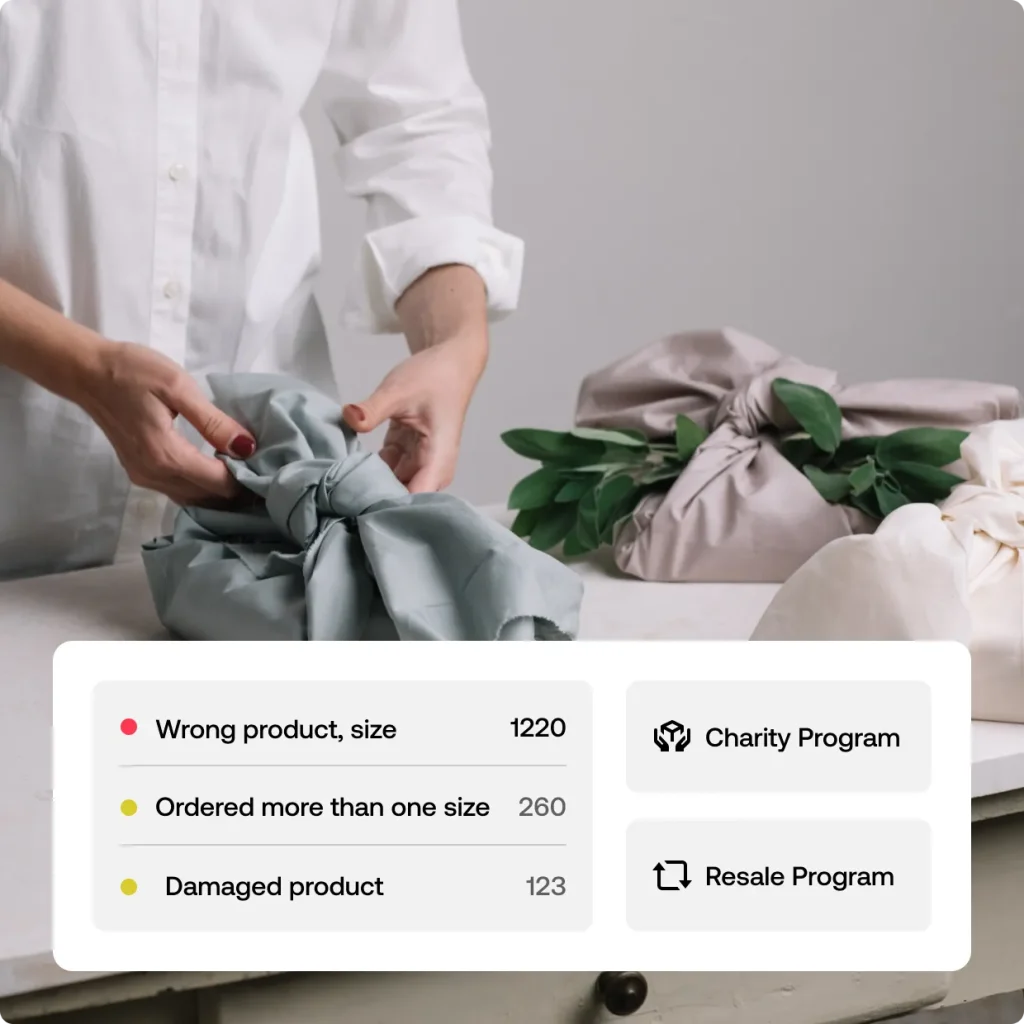
In a perfect world, returns would not happen and unused products would not end up in landfills. Your returns management provider may play a significant role in promoting green practices within the reverse logistics process:
By streamlining returns processes and minimizing unnecessary shipping, returns management software can help reduce the carbon footprint associated with returns.
Returns management software emphasizes efficient repair and refurbishment processes. This allows returned products to be revitalized and resold. This extends their lifecycles and reduces waste.
Your returns management provider should facilitate partnerships with recycling and disposal centers, ensuring that returned products are disposed of responsibly and recycled where possible.
Returns management providers offer various pricing models and packages tailored to different business needs.
Make sure that you review which key features are included in each pricing plan. Some providers only provide basic functionality with add-on features at a cost. This can add up quickly making your annual contract very expensive.
Returns management platforms should provide comprehensive customer support through multiple channels, including email, live chat, and phone. This personalized support is provided before a contract is signed, during onboarding, and throughout the lifespan of your partnership.
Additional software user documentation should be provided offering detailed FAQs and troubleshooting guides to assist you with common queries and issues.

The future of returns management in retail is set to be revolutionized by the use of customer data and the integration of artificial intelligence (AI) technologies.
Returns data and AI can play a crucial role in streamlining the returns process, improving efficiency, and enhancing customer satisfaction. By leveraging AI algorithms, merchants can automate the returns process, accurately analyze data and categorize returned items, and determine the most appropriate course of action for each return.
By harnessing this data effectively, merchants can use data analytics and machine learning to further enhance ecommerce returns. Predictive analytics can help merchants forecast returns volumes and patterns, enabling them to allocate resources effectively and plan for peak return periods.
This enables merchants to make informed decisions on whether to restock the item, refurbish it, or dispose of it. By reducing the time required for inspection and decision-making, merchants can expedite the return-to-shelf process and minimize inventory holding costs.
AI and returns data can also contribute to optimizing the product restocking and resale process. By employing computer vision technology, AI systems can quickly inspect returned items, identify any damage or wear, and determine their suitability for resale.
Imagine if you could integrate all tech stacks, systems, and policies in the post-purchase journey. Through open APIs, this automated and holistic data flow can improve business operations, reduce labor costs, and is the key to future growth, customer retention, and overall customer lifetime value.
Returns data integrated with other technology will provide a holistic view of shoppers and their customer lifetime value (CLV). Merchants will know who their most profitable customers are and choose to reward them with discounts, free shipping, or other promotions.
Due to the higher costs and logistical challenges associated with processing returns from online purchases, merchants are rethinking offering free return shipping. Merchants are choosing to diversify their omnichannel returns options.
This will cut down on shipping costs and allows for returns to be processed quicker. Large retail companies, like Zara, began charging for online product returns and encouraging alternative return methods in 2022.
Free return shipping will be offered to customers based on returns data and loyalty programs. Customers that buy the most, often return the most. These are often your most profitable customers and free returns shipping rules can be tailored to increase overall CLV.
Machine learning algorithms can analyze historical return data, customer behavior, and product attributes to provide personalized recommendations to customers, reducing the likelihood of returns due to incorrect purchases.
Through the use of returns data and returns optimization, merchants are able to pinpoint why returns are happening and implement operational strategies to fix them. Returns rates decrease freeing up more working capital that can be reinvested in other areas of the business.
Merchants care about remaining profitable. Through returns optimization, returns management helps merchants breakthrough, reframing returns as a cost of doing business to an intelligent operating system and profit center.
By leveraging AI algorithms and returns data, merchants can achieve greater accuracy in decision-making, improve inventory management, and ultimately provide a seamless returns experience, fostering customer satisfaction and loyalty in the highly competitive retail industry.
Returns management and reverse logistics are essential parts of the supply chain. They focus on efficiently handling products that have been returned and maximizing value recovery.
Returns management primarily addresses customer returns, focusing on return merchandise authorization (RMA), transportation, inspection, and refund processes.
Reverse logistics covers a wider range of activities. These include product receiving, sorting, repair, refurbishment, remarketing, and disposal.
Returns management and reverse logistics have differences in terms of focus, timeframe, value recovery, and customer experience. However, there are also areas of overlap and chances to integrate them.
Both functions can benefit from data and analytics integration, leveraging technology and automation, and fostering collaboration and communication between teams. These efforts can enhance working efficiency, streamline processes, and drive value creation.
To excel in the dynamic marketplace, merchants must recognize the importance of returns management and reverse logistics. Organizations can improve their supply chain performance by following best practices, using technology, and focusing on customer satisfaction. This will help them to manage returns efficiently, recover value, and enhance overall performance and customer lifetime value (CLV).


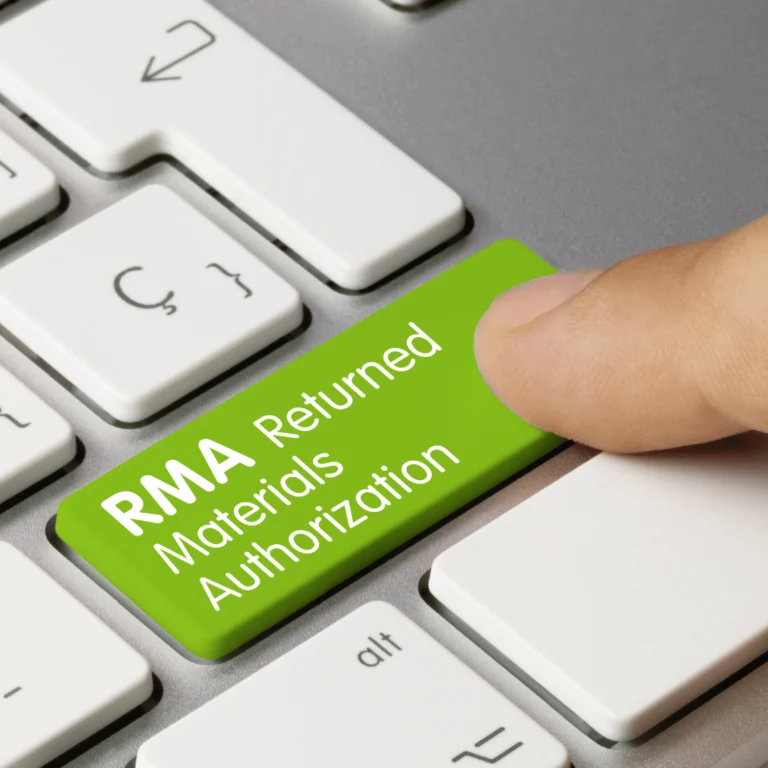
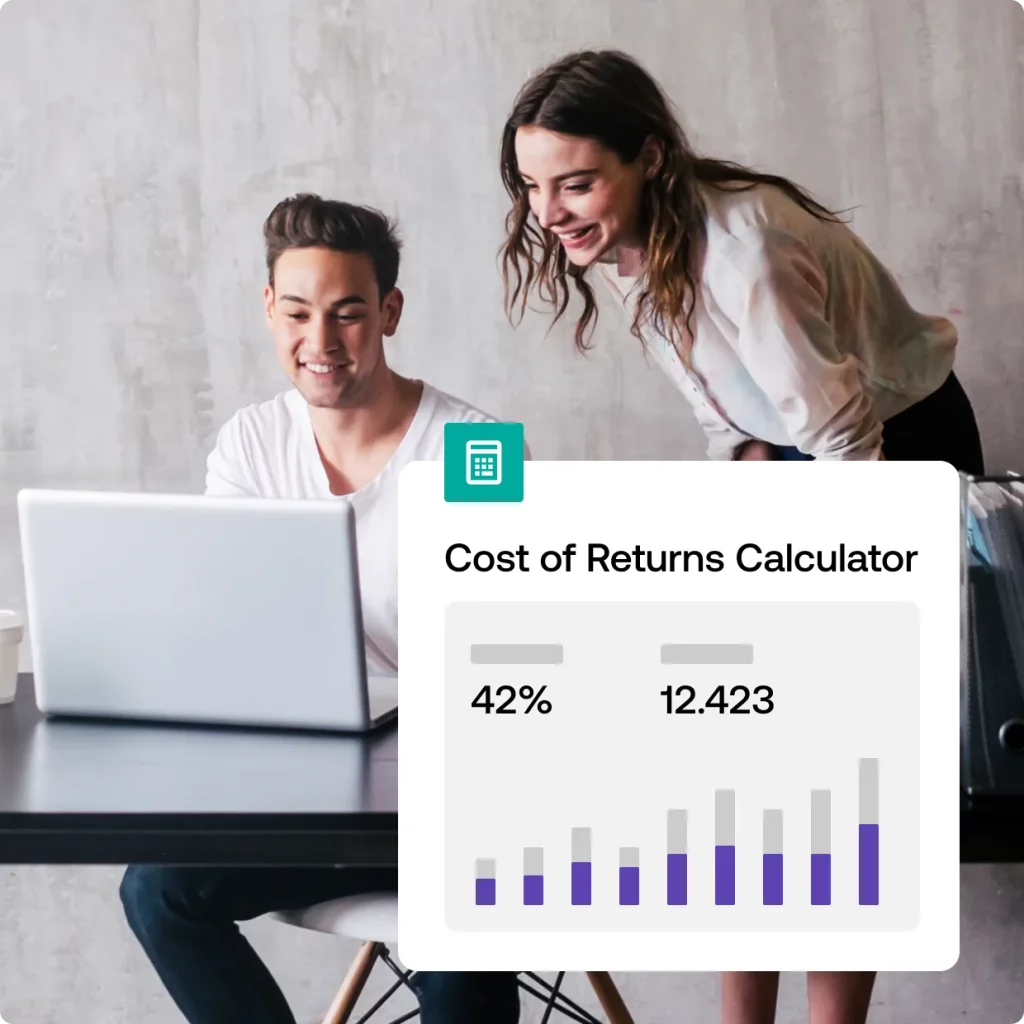
Talk to a returns specialist to see if you’re a good fit!
